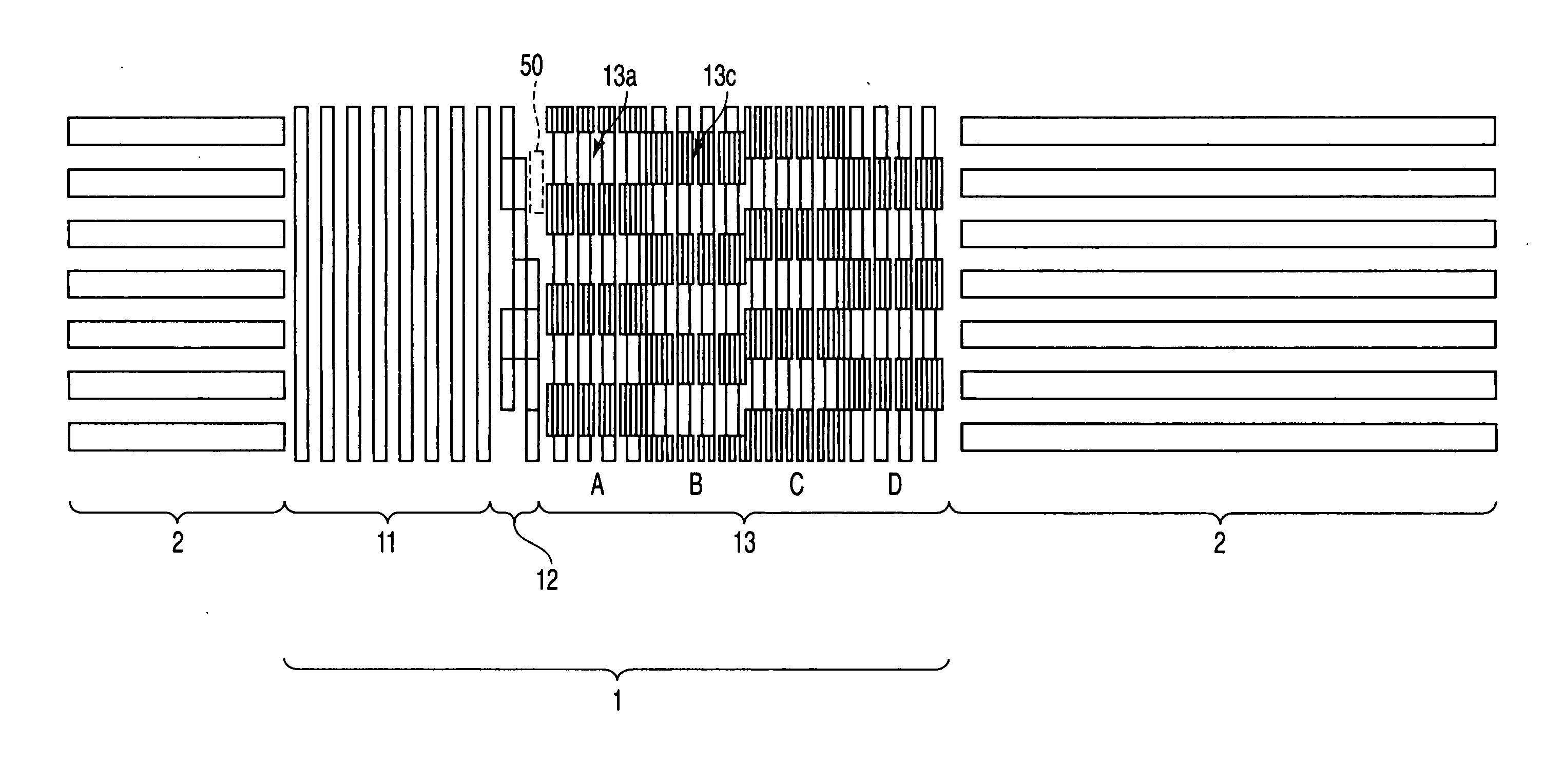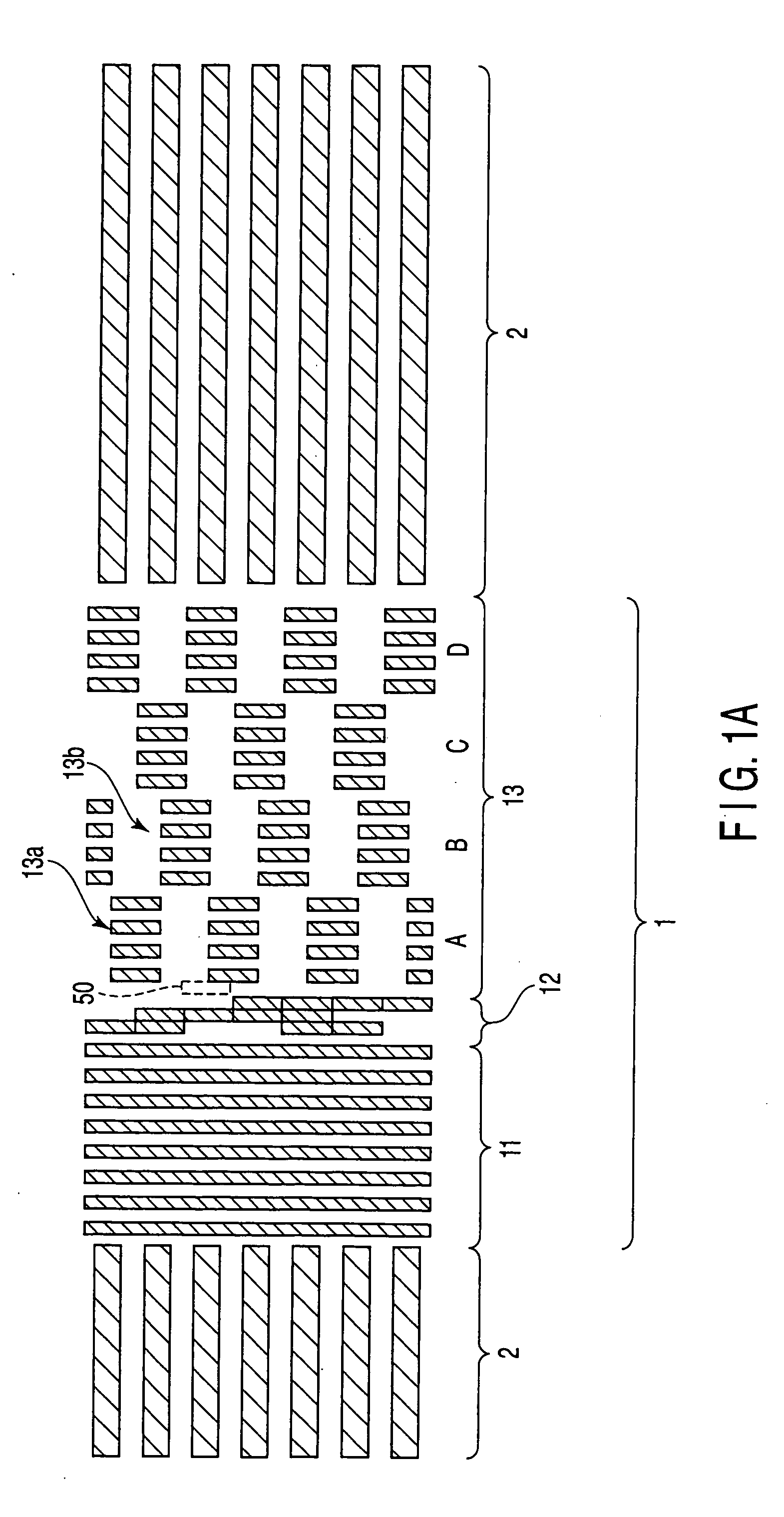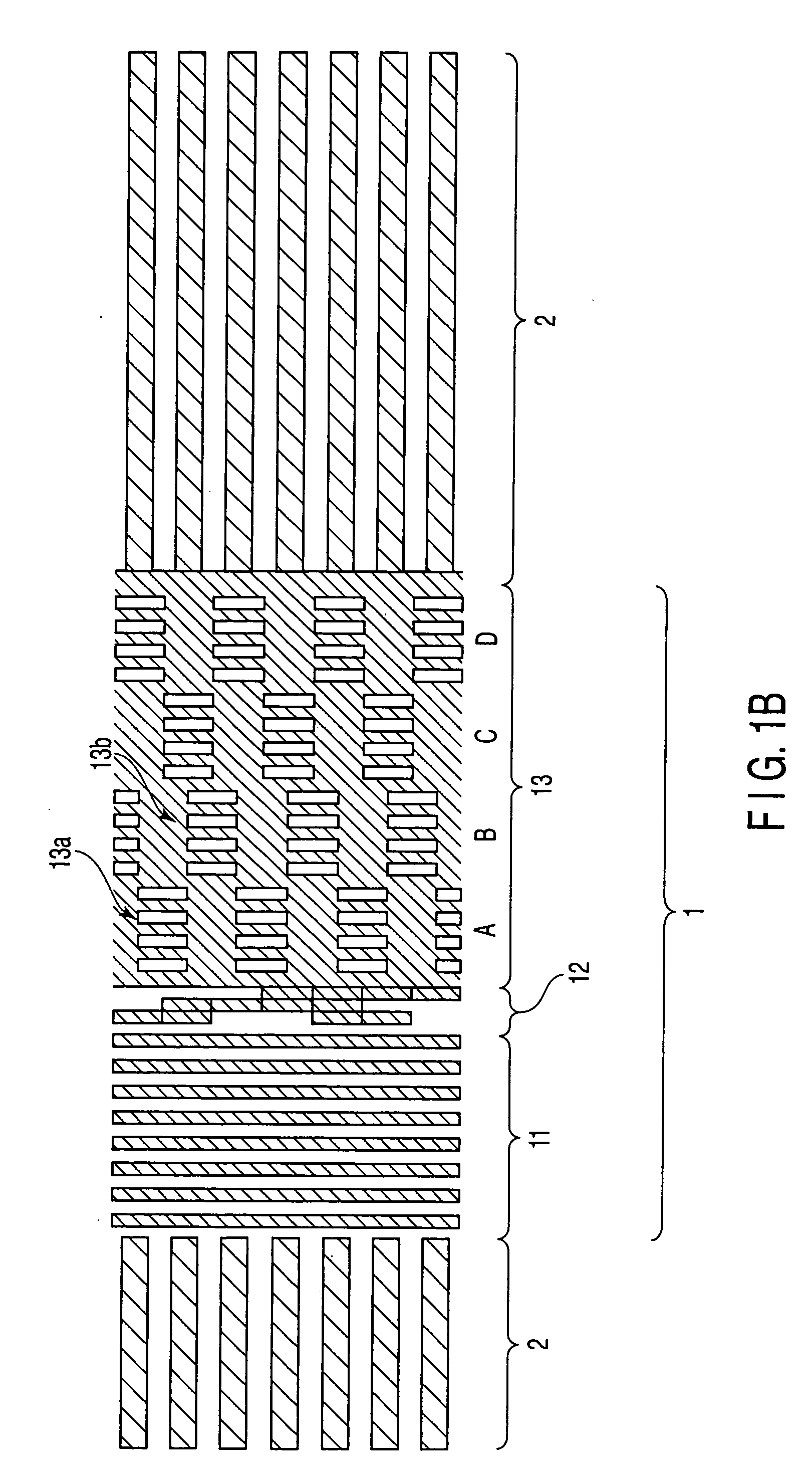Magnetic recording media, method of manufacturing the same and magnetic recording apparatus
a technology of magnetic recording media and magnetic recording apparatus, which is applied in the direction of digital recording, maintaining head carrier alignment, instruments, etc., can solve the problems of low throughput, high possibility of adverse effects on data recorded on adjacent tracks, and difficulty in processing magnetic film into such a microstructure by photolithography
- Summary
- Abstract
- Description
- Claims
- Application Information
AI Technical Summary
Problems solved by technology
Method used
Image
Examples
first embodiment
[0046]FIG. 4 is a plan view of the magnetic recording media according to this embodiment. As shown in this figure, the magnetic recording media includes the servo region 1 in which marks of a magnetic film are formed, and the data region 2 in which discrete tracks of the magnetic film are formed. The servo region 1 includes the preamble region 11, the address region 12 and the burst region 13.
[0047] In the preamble region 11, linear magnetic marks and spaces filled with the non-magnetic film between the marks are formed with the same intervals in the track direction. With this arrangement, the area ratio of the magnetic marks in the preamble region 11 is about 50%. In the address region 12, the pattern of the magnetic marks varies depending on the value of the address. Accordingly, the area ratio of the magnetic marks varies depending on the address. The area ratio of the magnetic discrete track in the data region 2 is set to about 67%. These regions are the same as those shown in ...
second embodiment
[0052]FIG. 5 is a plan view of a burst region of the magnetic recording media in this embodiment. The non-signal section 13c in the burst region 13 shown in FIG. 5 includes a plurality of linear marks of the magnetic film, in-plane geometry of which is a stripe parallel to the track direction. The rest of the structure is similar to that shown in FIG. 4. It should be noted that the pitch in the track width direction of the linear marks (second marks) formed in the non-signal section 13c shown in FIG. 5 is not particularly limited. In this embodiment, the width of each linear magnetic mark and the width of each non-magnetic space between the linear marks are set to a ratio of 3 to 1. Thus, the area ratio of the magnetic marks in the non-signal section 13c is about 75%. Consequently, the area ratio of the magnetic marks in the burst region 13 becomes about 63%.
[0053] In the magnetic recording media shown in FIG. 5, the area ratios of the magnetic marks are: about 50% for the preamble...
third embodiment
[0054]FIG. 6 is a plan view of a burst region of the magnetic recording media in this embodiment. The non-signal section 13c in the burst region 13 shown in FIG. 6 includes a plurality of dot marks of the magnetic film, in-plane geometry of which is a dot, formed in a periodic pattern. The pitch of the dot magnetic marks (second marks) in the non-signal section 13c is different from the pitch of the rectangular magnetic marks (first marks) in the signal section 13a. The rest of the structure is similar to that shown in FIG. 4. It should be noted that the pitch in the track width direction of the dot marks formed in the non-signal section 13c shown in FIG. 6 is not particularly limited. In this embodiment, the width of each dot magnetic mark and the width of each non-magnetic space between the dot marks are set to a ratio of 3 to 1 in the track direction and a ratio of 3 to 1 in the track width direction. Thus, the area ratio of the magnetic marks in the non-signal section 13c is abo...
PUM
| Property | Measurement | Unit |
|---|---|---|
| size | aaaaa | aaaaa |
| magnetic | aaaaa | aaaaa |
| area ratio | aaaaa | aaaaa |
Abstract
Description
Claims
Application Information
 Login to View More
Login to View More - R&D
- Intellectual Property
- Life Sciences
- Materials
- Tech Scout
- Unparalleled Data Quality
- Higher Quality Content
- 60% Fewer Hallucinations
Browse by: Latest US Patents, China's latest patents, Technical Efficacy Thesaurus, Application Domain, Technology Topic, Popular Technical Reports.
© 2025 PatSnap. All rights reserved.Legal|Privacy policy|Modern Slavery Act Transparency Statement|Sitemap|About US| Contact US: help@patsnap.com



